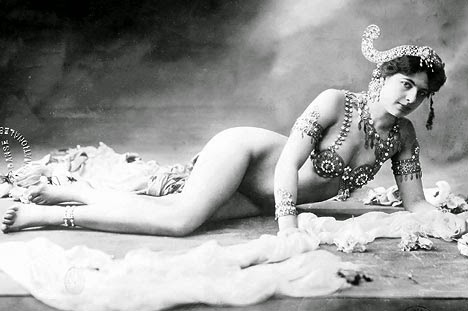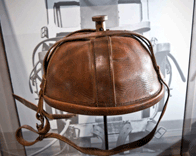Mata Hari Executed as Spy Oct. 15, 1917
Margaretha Geertruida "Margreet" Zelle MacLeod (7 August 1876 – 15 October 1917), better known by the stage name Mata Hari, was from the Netherlands, She was an exotic dancer and courtesan who was convicted of being a spy[1] and executed by firing squad in France under charges of espionage for Germany during World War I
With the outbreak of World War I, Mata Hari's cross-border liaisons with German political and military figures came to the attention of the French secret police and she was placed under surveillance. Brought in for questioning, the French reportedly induced her to travel to neutral Spain in order to develop relationships with the German naval and army attaches in Madrid and report any intelligence back to Paris. In the murky world of the spy, however, the French suspected her of being a double agent. In February 1917 Mata Hari returned to Paris and immediately arrested; charged with being a German spy.

Her trial in July revealed some damning evidence that the dancer was unable to adequately explain. She was convicted and sentenced to death. In the early-morning hours of October 15, 1917 Mata Hari was awakened and taken by car from her Paris prison cell to an army barracks on the city's outskirts where she was to meet her fate
 | |||
| Mata Hari at arrest |
 |
| Mata Hari performing in 1905 |
 |
| Mata Hari in 1906, wearing only a bra and jewellery. |


.jpg)






















